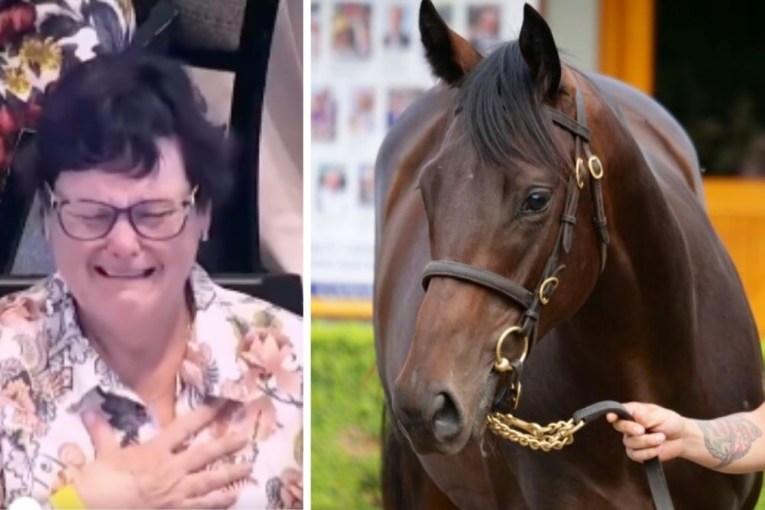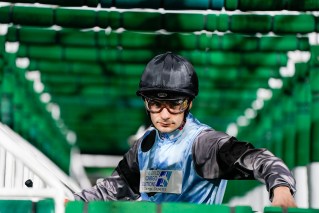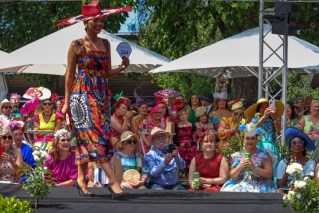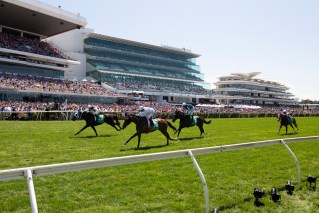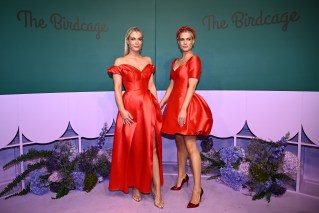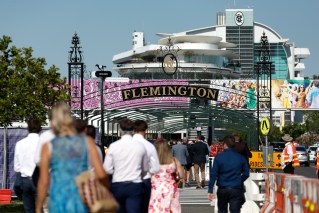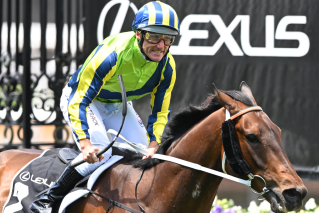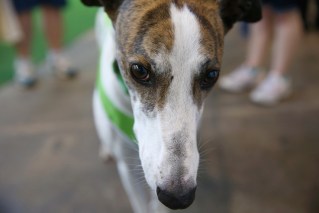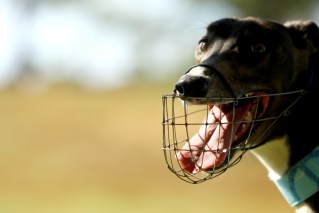Racing to oblivion: It’s the Melbourne Cup, then daylight as far as viewers are concerned

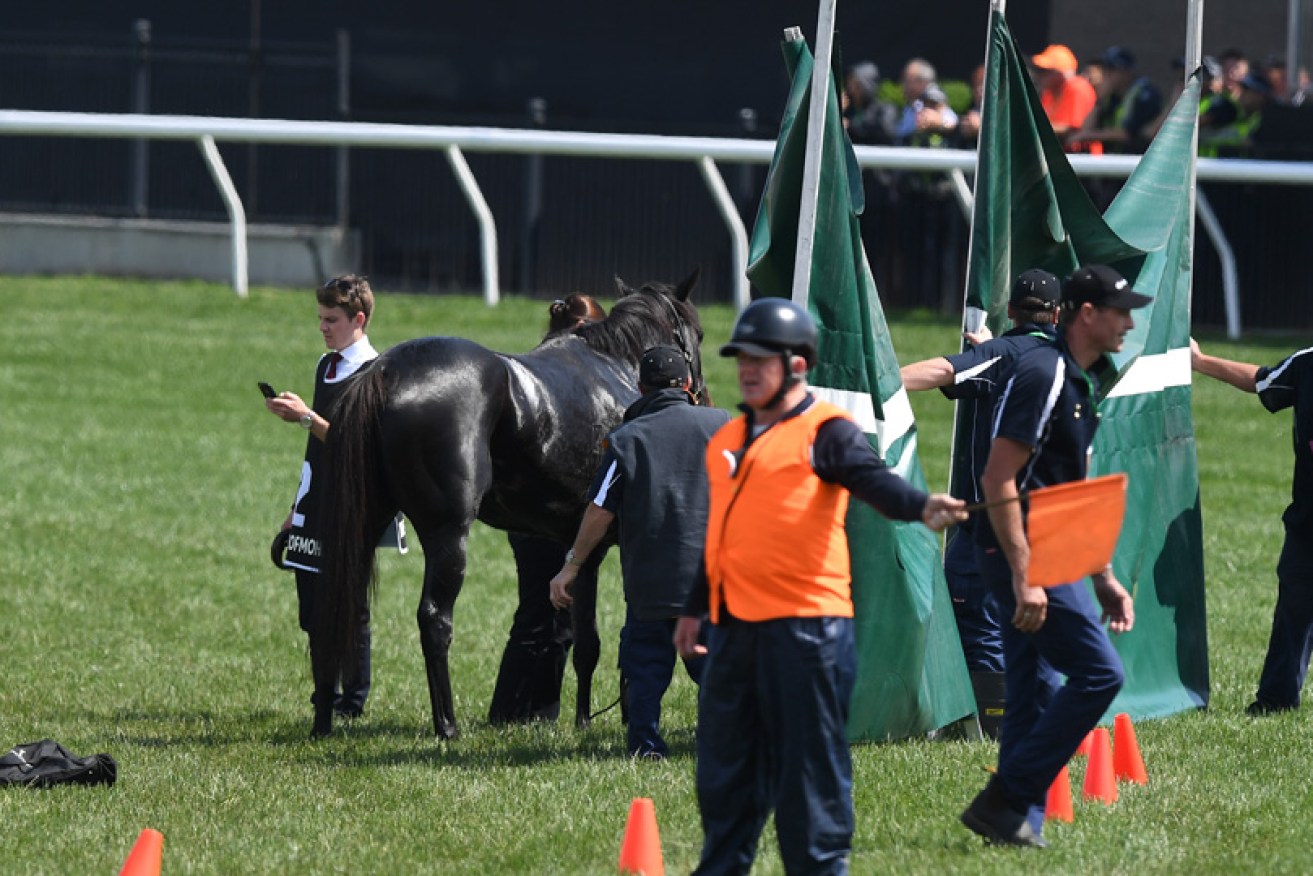
A terrible end. The Cliffsofmoher moments after breaking down in the 2018 Melbourne Cup. Photo: AAP
If the recent angst between the Victorian and New South Wales racing industry is any guide, the sport may be starting to eat itself as its share of the gambling dollar comes under threat from other forms of betting.
On the issue of “trust” the industry appears under even greater attack, with the ongoing ‘jigger’ cruelty revelations about former Melbourne Cup-winning trainer Darren Weir and Thursday’s ABC expose on the slaughtering of hundreds of thoroughbreds.
On Friday there was another blow, with a Roy Morgan report highlighting the plummeting television viewership of racing in Australia, statistics that are clearly causing racing authorities to try and shore up their offerings with even bigger prize money and by staking claim to the key spring carnival dates.
There has been horror across the nation at the ABC revelations on the 7.30 program, with the federal government on Friday weighing into the debate by saying the story was “upsetting”
Not half as upsetting for those who have loved and cared for the animals in their previous careers, with one Queensland jockey saying she had “failed” the horse she rode, having seen it slaughtered on national television.
Racing Australia’s official data shows around 34 horses every year end up at slaughterhouses – a figure amounting to less than one per cent of retiring racehorses. But according to the ABC, the actual number is much higher.
“They have now been proven wrong and must own up to the fact that they have a serious welfare problem,” said Coalition for the Protection of Racehorses spokesman Elio Celotto.
The CPR said up to 220 horses are being killed weekly at a Queensland abattoir and, on average, 56 per cent are racehorses.
With those revelations in the headlines, the industry was also put on notice after Roy Morgan Research revealed the results of its latest survey on horse racing television viewership, showing a steep decline over the past four years.
The polling outfit claims 5.2 million people have watched some horse racing on TV in the past year — a drop of nearly 700,000 viewers compared to figures from 2015.
The research company said its interviews with 50,000 Australians showed the Melbourne Cup stood out as the main racing event, with an estimated 5.1 million Australians watching the broadcast of the race.
It said 98 per cent of Australians who watch any type of horse racing on TV watch the Melbourne Cup.
Many would have seen the news in last year’s race that The Cliffsofmoher had to be euthanised on track after sustaining an injury during the race.
Still, the show must go one.
Racing New South Wales chief Peter V’landys has in recent years made a high profile bid to wrest some of those TV eyeballs to his state, but even Australia’s richest turf race, The Everest, could not make a dent in the overall decline.
The Everest attracted 750,000 viewers, proving that big paydays and promotion can excite interest – although possibly only at the expense of other race meetings.
V’landys has scheduled his big money event on the same day as the Caulfield Cup in a bid to overcome Victorians dominance of spring racing, but if the Roy Morgan figures are any guide the slice of the pie is getting smaller, with the racing audience increasingly older and male.
“Australians are increasingly turning to other entertainment choices at the expense of horse racing,” said Roy Morgan chief executive Michele Levine.
Only a quarter of Australians are now watching any type of horse racing on TV, down from over 30% just four years ago.
“Perhaps the biggest concern for the industry is that interest in horse racing is relatively shallow and event specific.
“Only 10 per cent of Australians watch any type of horse racing on TV outside the Melbourne Cup.”
Levine noted that trust in the sport was also low, given recent scandals.
“Roy Morgan measures trust and, critically, distrust across a range of industries, including 18 key sports. Even before the effect of last week’s high-profile animal cruelty charges can be quantified, the results for horse racing don’t tell a positive story.
“Horse racing has the fourth-highest level of distrust of the 18 key sports measured. The detailed responses we received about why people felt this way highlighted key themes revolving around the influence of gambling on the integrity of the sport.”
The decline in racing attendances is a worldwide phenomenon, and in the United States there’s been an ongoing debate about to prevent the death rate of horses.
In a recent New York Times report on the industry one trainer, Walker Hancock, said the public’s love of thoroughbreds themselves was the biggest threat to the business.
“We got to start proving that we are doing all that we can to do the best for these horses,” Hancock said.
If not, we are out of business and we should be.”
It’s a message the racing community in Australia has been keen to downplay, with the industry keen to argue its credentials in animal welfare are the key to everything it does.
And yet it’s only been direct action by protestors that has shone a light on some of the sport’s more dangerous events. In recent years the focus of protests has been on jumps racing, with those campaigns resulting in a steep decline in attendance at such events.
Earlier this year the ABC reported that less than a quarter the number of people attended this year’s South Australian Oakbank Easter Racing Carnival than a decade ago
About 25,000 punters attended the Adelaide Hills event in April, compared with more than 100,000 over the two days a decade ago.
The 143-year-old event was again targeted by protesters, who want jumps racing banned, as it is in every state except South Australia and Victoria.
Oakbank Racing Club president Barney Gask said public holiday horse racing had become less popular across the country, not just at Oakbank.
“People do different things now than what they used to do years ago,” he said.
“Racing has become less popular Australia-wide, it’s not just Oakbank.”

Hundreds of Australian racehorses are ending up at abattoirs and knackeries each year.
This week’s revelations will have done nothing to change that view, with behavioural scientist Professor Paul McGreevy telling the ABC there was no way the racing industry could defend the slaughter.
“This is a clear breach of everything the industry has told us,” he said.
And more government intervention may be on the way, with Home Affairs Minister Peter Dutton putting the onus on state governments.
“It is upsetting,” he said, “and if there is a law … it needs to be enforced if it is not. But it is a very difficult situation.”
Needless to say, as with the proven harm from poker machines, there’s little likelihood state government’s will step in when there’s still big money to be made from tourism and wagering.
